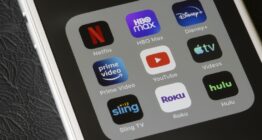Analysis: Cost-conscious viewers drive streaming’s ad-supported evolution

Subscribe to NCS for the latest news, project case studies and product announcements in broadcast technology, creative design and engineering delivered to your inbox.
The latest wave of market research reveals new trendlines in how Americans consume television content, marked by pragmatic choices rather than technological enthusiasm. Multiple industry reports paint a picture of viewers making calculated decisions about their entertainment spending, with ad acceptance emerging as a defining trend of 2024.
Parks Associates research shows that 57% of subscribers on major streaming platforms now opt for ad-supported tiers.
This reflects more than mere cost consciousness – it signals a maturing market where consumers weigh value against convenience. The $45 price differential between average streaming and cable bills, highlighted in J.D. Power’s latest study, quantifies this value proposition.
But numbers tell only part of the streaming story.
TiVo’s research reveals a deeper behavioral change: viewers watch less but watch smarter. The average consumer now juggles 9.1 services, down from 10.9 in 2023. This reduction hasn’t led to less viewing time; viewers are maximizing value through bundled services and ad-supported options.
Connected TV platforms report similar patterns. Wurl’s data shows average daily viewing hours increased 5% year-over-year in Q3 2024, while session lengths grew 7%. These metrics suggest viewers aren’t just accepting ads but settling into sustainable viewing habits.
The ad experience itself warrants examination.
Current FAST channels average nine minutes of advertising per hour – notably lower than traditional cable ad loads. This restraint appears deliberate, as platforms recognize the delicate balance between monetization and viewer tolerance. Wurl’s research indicates that while ad fill rates have declined, viewer engagement has increased, suggesting that less might indeed be more.
Sports content emerges as a particular bright spot. Amagi’s research documents a 150% surge in sports viewership on FAST platforms, dwarfing the 40% growth across other content categories. This trend challenges conventional wisdom about sports’ dependence on traditional distribution models.
The hardware landscape reflects these shifts. Pixalate’s device analysis shows established players facing new competitive pressures. Roku’s North American market share declined 29% year-over-year, while competitors like Apple TV and LG made significant gains. These changes suggest viewers are prioritizing user experience alongside content access.
Looking ahead, several trends bear watching.
The growing acceptance of ad-supported models may accelerate as subscription fatigue sets in. TiVo reports that 64% of consumers now use AVOD services, up 16 percentage points in one year. This trajectory suggests that ad-supported viewing isn’t just a temporary response to economic pressures but a sustainable model for content distribution.
The industry faces clear challenges. Electronic program guides need improvement, user interfaces require refinement and ad experiences must continue evolving. But the data suggests television’s streaming transformation has entered a new phase – one marked by practical considerations rather than platform proliferation.
This moment represents more than a market correction. It signals the emergence of a sustainable ecosystem where viewers make informed choices about their entertainment spending. The industry’s challenge now lies not in converting viewers to streaming, but in delivering value within the parameters, viewers have established.
For industry observers, these trends suggest several conclusions.
First, the streaming wars have evolved from a battle for subscribers to a competition for engagement. Second, ad tolerance has emerged as a crucial metric for platform success. Finally, the distinction between traditional and streaming television continues to blur, with viewing habits rather than delivery methods driving consumer choices.
As the market matures, success will likely favor platforms that embrace these realities rather than resist them. The data suggests viewers have clarified their preferences – they want choice, value and respect for their time and attention. The platforms that deliver on these expectations while maintaining profitable operations will define television’s next chapter.
Subscribe to NCS for the latest news, project case studies and product announcements in broadcast technology, creative design and engineering delivered to your inbox.







tags
Ad-Supported Video on Demand (AVOD), Free Ad-Supported Streaming Television (FAST), Streaming OTT, Subscription Video On Demand (SVOD), SVOD
categories
Heroes, Market Research Reports & Industry Analysis, Streaming, Voices